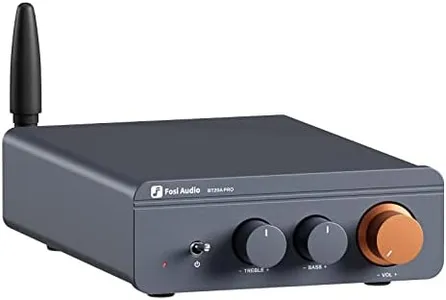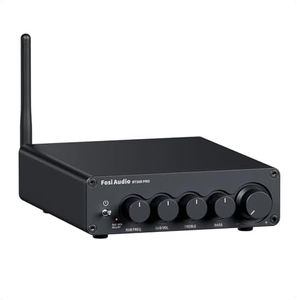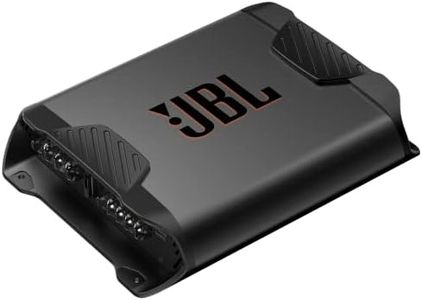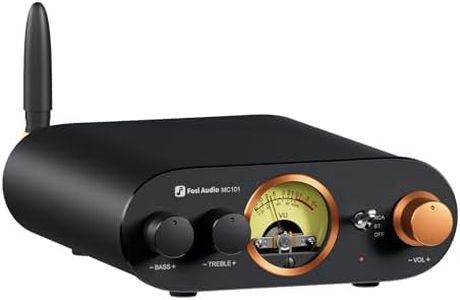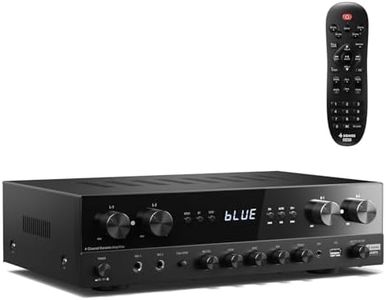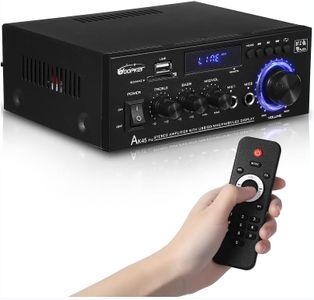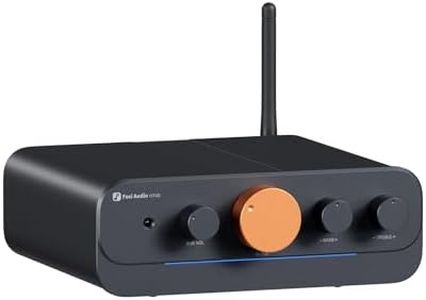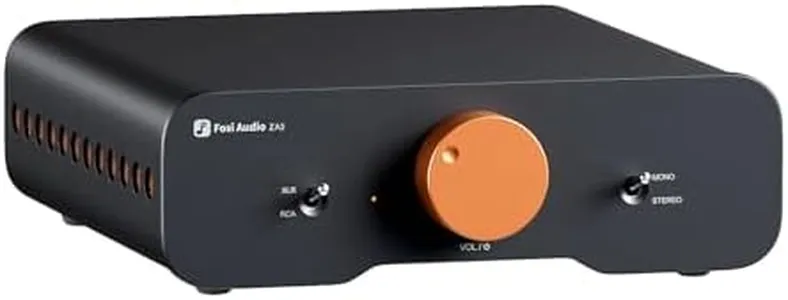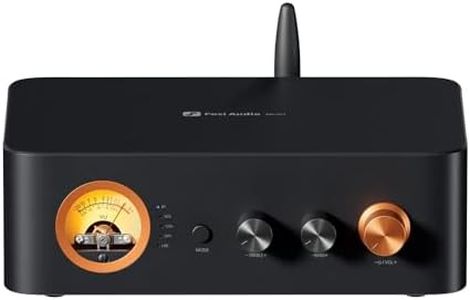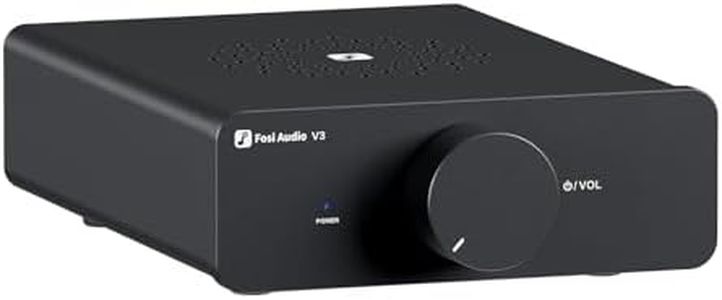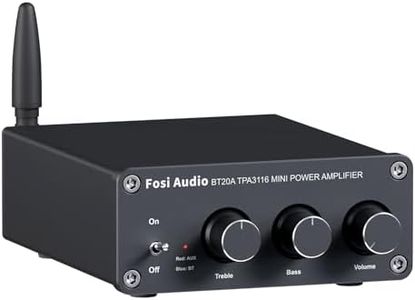We Use CookiesWe use cookies to enhance the security, performance,
functionality and for analytical and promotional activities. By continuing to browse this site you
are agreeing to our privacy policy
10 Best Stereo Amplifiers
From leading brands and best sellers available on the web.By clicking on a link to a third party's website, log data is shared with that third party.
Buying Guide for the Best Stereo Amplifiers
Choosing the right stereo amplifier is important for building a high-quality audio system that matches your listening preferences and setup. An amplifier boosts the audio signal from your source (like a phone, turntable, or CD player) to a level powerful enough to drive your speakers. When picking the best one for you, it's important to think about how and where you'll use it, the type of music you enjoy, and the speakers you'll pair it with. By understanding the main specifications, you'll be able to make an informed choice that brings out the best in your music and fits seamlessly into your home.Power Output (Watts per Channel)Power output indicates how much electrical power the amplifier can send to each speaker. This is important because it affects both how loud your system can get and how well it can control your speakers, especially at higher volumes. Power output is usually measured in watts per channel—higher numbers mean the ability to drive bigger or less sensitive speakers louder and with more authority. Typically, amplifiers range from about 20 to 200 watts per channel. For small rooms and efficient (easy-to-drive) speakers, lower power may be enough, while larger rooms, outdoors, or large, less sensitive speakers will benefit from higher wattage. To pick the right value for you, consider your room size, speakers’ sensitivity, and how loud you like to listen.
Impedance CompatibilityImpedance, measured in ohms, is a way of expressing how much resistance your speakers give to the current from the amplifier. It's important because you want to ensure your amp can safely work with your speakers. Most home speakers are rated at 4, 6, or 8 ohms, and amplifiers will specify what impedance range they support. Using the amplifier with a speaker impedance it's not rated for can cause poor performance or even damage. To pick the right amplifier, check the impedance rating of your speakers and make sure your amplifier matches or covers that range.
Inputs and OutputsInputs are the connections available for your audio sources, such as CD players, turntables, televisions, or streaming devices. Outputs might include speaker terminals and pre-amp outputs for subwoofers or additional amps. The number and type of inputs is important to make sure you can connect everything you plan to use—look for analog (RCA), digital (optical/coaxial), USB, and phono (for turntables) as needed. If you have many devices or plan to add more, choose a model with extra connections. Consider your current and future needs to ensure enough flexibility.
Form Factor and SizeThe physical size and shape of the amplifier matter for fitting it into your chosen space, such as a shelf, cabinet, or media center. Some amplifiers are compact and minimalist, while others are large and heavy, especially higher-powered models. If space is tight or you want a clean setup, measure your available area and look for units that will fit comfortably and allow for proper ventilation.
Features and ConnectivityModern amplifiers often come with extra features like Bluetooth, Wi-Fi, streaming support, built-in DACs (digital-to-analog converters), or tone controls (bass/treble). These features can make it easier to use wireless devices or enjoy better sound from digital music sources. If you enjoy streaming music or want to connect your phone wirelessly, prioritize these features. If you only plan to play physical media, simpler amplifiers without extra features may suit you just fine. Think about the conveniences that match your lifestyle.
Build Quality and ReliabilityBuild quality refers to how solid and well-made the amplifier feels, and reliability is about how long it will last without issues. This matters because amplifiers are a long-term investment, and durable models with quality materials tend to sound better and have fewer problems. Details like solid metal cases, smooth knobs, and heavy-duty speaker connectors often signal good construction. If you prioritize long-term value and trouble-free operation, look for amplifiers that feel and look well-built.



